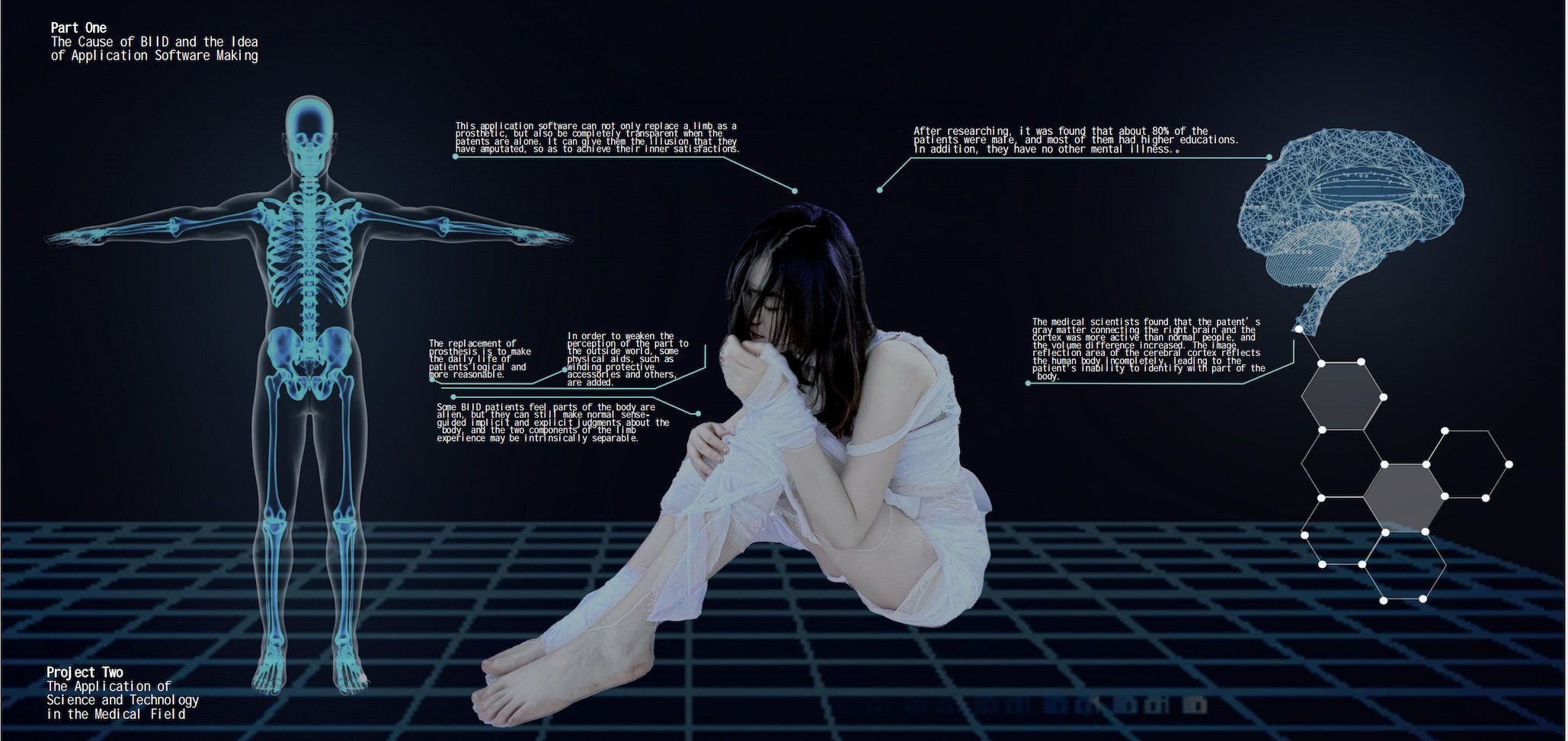Project Introduction
This project was inspired by body integrity identity disorder (BIID) in some people. This disease is a rare delusion in which patients believe that a part of their body is not theirs and the only way to cure it is to amputate. Most countries prohibit doctors from removing healthy limbs from people because it violates medical ethics. Through primary and secondary research on the causes and previous cases of BIID, it was found that this disease occurs as early as childhood. In previous research cases, most of them have received higher education, and the patients themselves are aware that the idea of amputation is not accepted by the public.
Based on the analysis of research cases and BIID patient websites, the following two points were found. First, due to the long-term unmet inner needs, they can only play the role of disabled people in private spaces, leading to other psychological diseases such as depression. Some patients choose to remove body parts that they think do not belong to them, leading to infection and death. Second, for the convenience of daily life, patients will use external assistive tools, including wheelchairs, crutches, and prostheses, so I will focus on the direction of treating this disease.
I try to develop and design an application software that uses mixed reality methods to achieve virtual replacement or transparency to meet the inner needs of patients. Through the application software, patients can change prostheses according to different occasions, weather and clothing. Prostheses can be changed as much as possible in the virtual world to make patients feel real. Application software in shopping malls can be classified according to function, material, color, etc. In order to prevent patients from feeling lonely inside, they can communicate and interact with patients, increasing their privacy and social activities.



